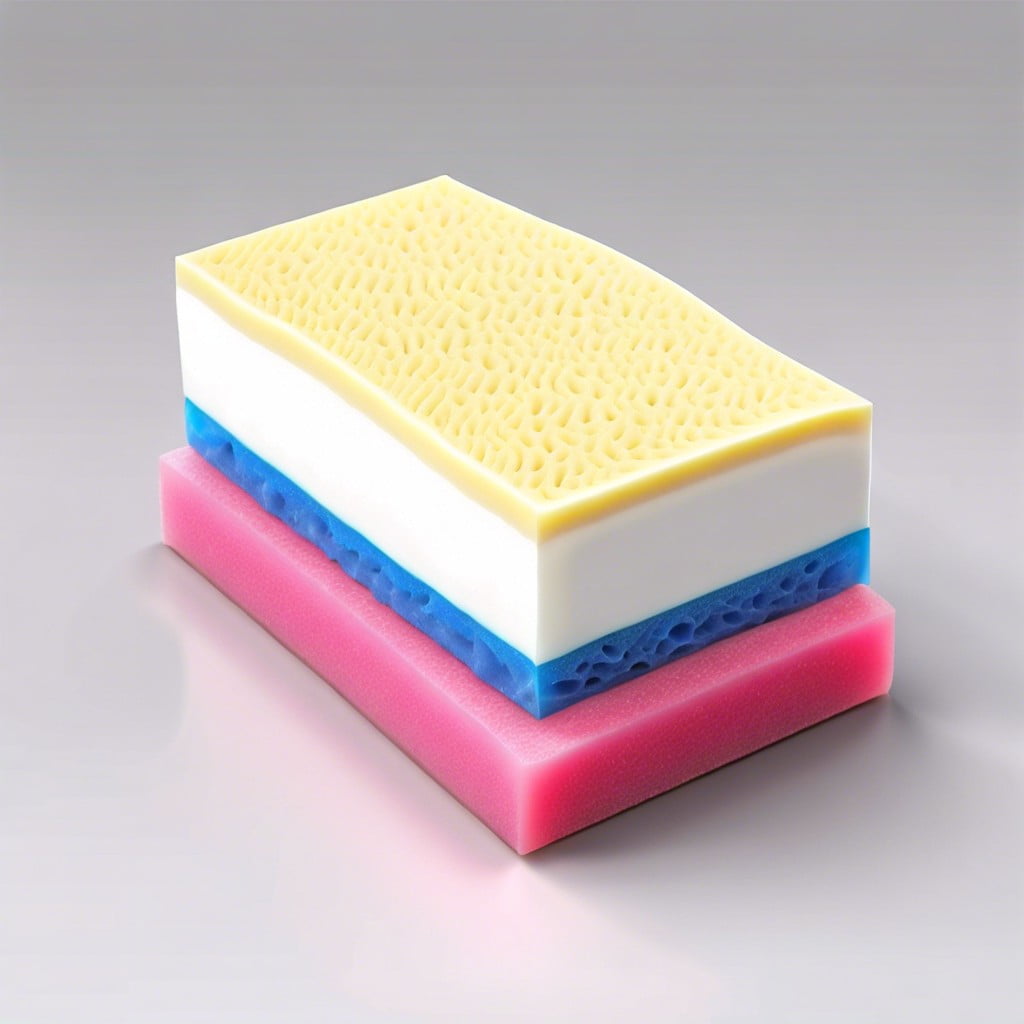Discover how polymer erasers make correcting mistakes easier and what sets them apart from traditional rubber erasers.
Key takeaways:
- Polymer erasers are composed of plastic materials like SBS and PVC.
- They erase cleanly with minimal pressure and produce minimal dust.
- Polymer erasers are durable and versatile, suitable for pencil and ink marks.
- They are favored by artists and professionals for precision work.
- Look for eco-friendly options and consider Hi-Polymer® erasers for quality.
Composition of Polymer Erasers

Polymer erasers are primarily composed of plastic materials such as styrene-butadiene-styrene (SBS) and polyvinyl chloride (PVC). These plastics give polymer erasers their distinctive texture and superior erasing capabilities.
To achieve the optimal balance between firmness and flexibility, plasticizers are added. These substances make the eraser less brittle and more effective at lifting graphite from the paper without tearing it.
Fillers such as silica are incorporated to modulate the eraser’s abrasiveness, ensuring it can remove pencil marks efficiently without damaging the surface underneath.
By varying the composition, manufacturers can produce erasers with different properties like firmness, texture, and lifespan. This customization allows them to tailor erasers for specific uses, such as fine art, drafting, or general stationery.
Advantages Over Conventional Rubber Erasers
Polymer erasers offer enhanced performance compared to traditional rubber erasers. One significant advantage is their ability to erase marks cleanly without requiring much pressure. This ensures minimal damage to the paper and is particularly beneficial for thin or delicate surfaces.
Furthermore, they produce minimal eraser dust. Instead of crumbling into small pieces that can smear the page, polymer erasers often leave behind a few intact strips that are easy to clean up. This feature makes them ideal for maintaining a tidy work environment.
In terms of longevity, polymer erasers tend to last longer. Their durability stems from a high resistance to crumbling and a slower wear rate, which makes them economical choices over time.
They are also known for their versatility. These erasers can remove pencil marks as well as some types of ink, making them useful tools for artists and professionals who require precision.
Finally, because polymer erasers do not contain phthalates, which are often found in plastic products, they are less likely to cause allergic reactions, offering a safer choice for users.
Applications in Art and Precision Work
Polymer erasers are favored by artists for their gentle touch on paper. Their soft, pliable nature ensures that colors or graphite can be lifted without damaging the work surface. They are also excellent for creating light effects or softening edges in drawings, lending versatility to shading techniques and fine detailing.
In precision work, these erasers stand out due to their ability to remove targeted areas without leaving residue. Their edges can be shaped for intricate erasing, making them perfect for architects or engineers who require exact modifications to plans or sketches. The fact that they don’t crumble easily allows for clean, controlled erasing with minimal debris, keeping workspaces tidy and documents unblemished.
Whether used for gently correcting strokes in a portrait or adjusting lines in a technical drawing, the application of polymer erasers in art and precision work showcases their indispensability in disciplines where accuracy and care are paramount.
Environmental Impact and Biodegradability
Polymer erasers are primarily made of plastic compounds like vinyl and styrene, which are not biodegradable. This means that when they are discarded, they do not break down easily and can remain in landfills for a very long time, contributing to plastic waste.
However, some manufacturers have started to address these environmental concerns. They are producing erasers made from thermoplastic elastomers (TPEs), which are designed to be more eco-friendly. TPEs can be processed and recycled more easily than traditional plastics, reducing their environmental footprint.
Furthermore, the wear and tear of erasers as they’re used create small particles called “eraser dust.” While this dust is non-toxic and doesn’t pose a direct threat to human health, it can accumulate and contribute to the microplastics problem if it enters water systems or the wider environment.
To minimize impact, consumers and institutions can look for polymer erasers with eco-credentials, such as those made from sustainable materials or accredited by environmental standards. Proper disposal and recycling, where possible, are also key in reducing the environmental impact of these everyday tools.
Brand Variations: Hi-Polymer® Eraser
Hi-Polymer® is a trademark of the Pentel brand, recognized for its high-quality synthetic rubber erasers. These erasers are engineered using a refined polymer that offers superior erasure performance. Professionals and students alike favor them for several reasons:
- Minimal Residue: Hi-Polymer® erasers produce significantly less eraser dust, keeping workspaces clean and maintaining the integrity of the paper.
- Durability: They tend to be more durable than standard rubber erasers, resisting crumbling and maintaining their shape and erasing effectiveness over extended use.
- Consistent Quality: With their uniform composition, Hi-Polymer® erasers ensure a predictable and even erasing action, offering precise control for detailed work.
- Variety: Pentel offers these erasers in different shapes and sizes, catering to various needs — from large blocks suitable for broad erasing to smaller, pen-style erasers for pinpoint accuracy.
These attributes make Hi-Polymer® erasers a preferred choice for artists, architects, and anyone who requires clean, precise erasure with minimal pressure.
Recap




